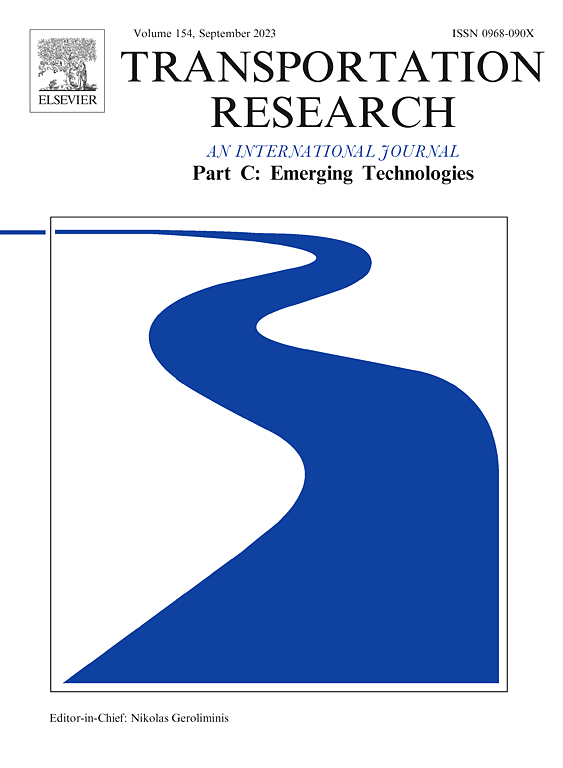A benchmark for cycling close pass detection from video streams
IF 7.6
1区 工程技术
Q1 TRANSPORTATION SCIENCE & TECHNOLOGY
Transportation Research Part C-Emerging Technologies
Pub Date : 2025-03-27
DOI:10.1016/j.trc.2025.105112
引用次数: 0
Abstract
Cycling is a healthy and sustainable mode of transport. However, interactions with motor vehicles remain a key barrier to increased cycling participation. The ability to detect potentially dangerous interactions from on-bike sensing could provide important information to riders and policymakers. A key influence on rider comfort and safety is close passes, i.e., when a vehicle narrowly passes a cyclist. In this paper, we introduce a novel benchmark, called Cyc-CP, towards close pass (CP) event detection from video streams. The task is formulated into two problem categories: scene-level and instance-level. Scene-level detection ascertains the presence of a CP event within the provided video clip. Instance-level detection identifies the specific vehicle within the scene that precipitates a CP event. To address these challenges, we introduce four benchmark models, each underpinned by advanced deep-learning methodologies. For training and evaluating those models, we have developed a synthetic dataset alongside the acquisition of a real-world dataset. The benchmark evaluations reveal that the models achieve an accuracy of 88.13% for scene-level detection and 84.60% for instance-level detection on the real-world dataset. We envision this benchmark as a test-bed to accelerate CP detection and facilitate interaction between the fields of road safety, intelligent transportation systems and artificial intelligence. Both the benchmark datasets and detection models will be available at https://github.com/SustainableMobility/cyc-cp to facilitate experimental reproducibility and encourage more in-depth research in the field.
求助全文
约1分钟内获得全文
求助全文
来源期刊
CiteScore
15.80
自引率
12.00%
发文量
332
审稿时长
64 days
期刊介绍:
Transportation Research: Part C (TR_C) is dedicated to showcasing high-quality, scholarly research that delves into the development, applications, and implications of transportation systems and emerging technologies. Our focus lies not solely on individual technologies, but rather on their broader implications for the planning, design, operation, control, maintenance, and rehabilitation of transportation systems, services, and components. In essence, the intellectual core of the journal revolves around the transportation aspect rather than the technology itself. We actively encourage the integration of quantitative methods from diverse fields such as operations research, control systems, complex networks, computer science, and artificial intelligence. Join us in exploring the intersection of transportation systems and emerging technologies to drive innovation and progress in the field.

 求助内容:
求助内容: 应助结果提醒方式:
应助结果提醒方式:


